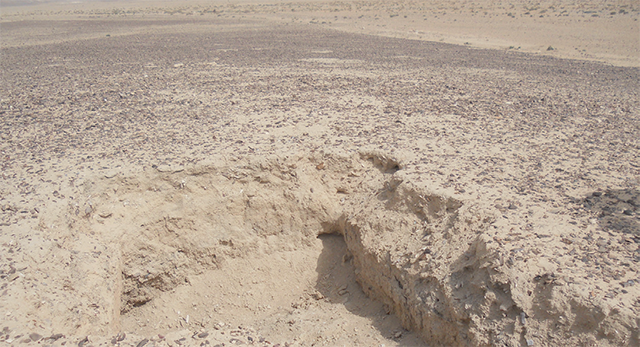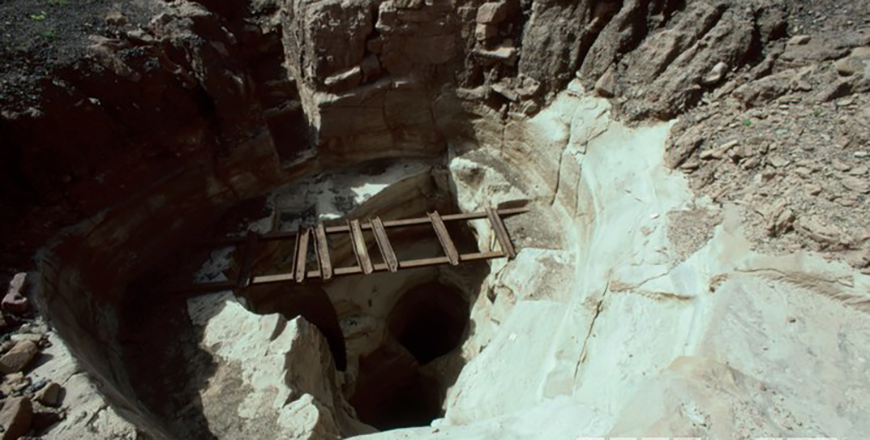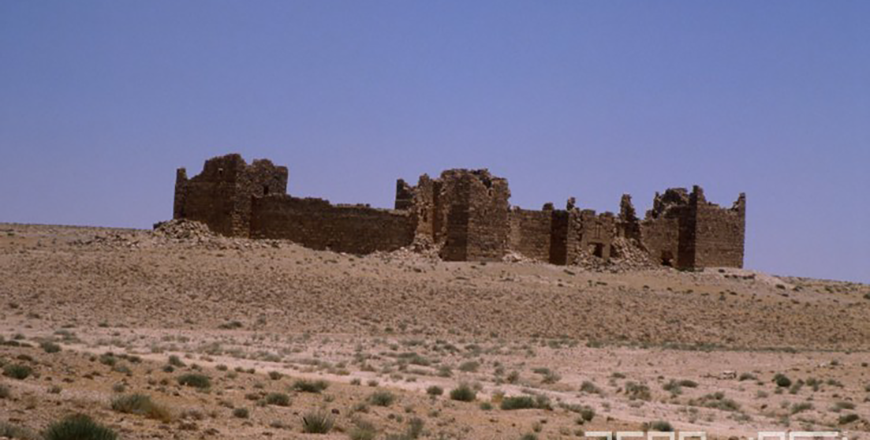You are here
Nomadic traditions, modern realities — Exploring Bedouin culture
By Saeb Rawashdeh - Apr 01,2024 - Last updated at Apr 01,2024

Arid landscape of Wadi Feynan was known in ancient times for its copper production (Photo courtesy of ACOR/ Barbara Porter Collection)
AMMAN — The name “Bedouin” is derived from the term for nomadic desert or steppe dwellers (badawa). It is not an ethnic name and is used to refer to populations across the steppes and deserts of the Arab world who are associated with a nomadic-pastoral-tribal way of life.
“They were romantically described by early travellers to the Near East in the 19thand early 20thcenturies, who saw them as the living representation of biblical nomadic folks. Bedouin were presented as camel breeders migrating far across the steppe landscape, their travels promoted by the invention of the camel saddle and, as a corollary, the black long tents,” noted Danielle Vos from the Groningen University.Bedouins were portrayed as fierce, rugged and having warlike tendencies and a disdain for authority, but also as great hosts and honourable individuals with proud oral traditions.
Vos added that the notion of the “true” Bedouins as camel breeding nomadic tribes venturing deep into the desert is also idealised in the Near East and among Bedouin tribes themselves.
In fact, the role of Bedouins evolved through time and they became farmers, cattle raisers, sheep herders, sometime brigands.
It is a combination of these social roles since the society changed and their role evolved.
Vos categorises three common types: one having a “proper” nomadic existence, raising only camels and some horses; another consisting of sheep herders that have some contact with settlements in the area; and those belonging to the third type who maintain a migration that is restricted to the peripheries of villages and towns, where produce from animal husbandry can be sold.
“Bedouin’s ways of life at Wadi Faynan today include a variety of subsistence strategies, of which sheep and goat herding, cultivation and involvement in the local tourist industry are the most prominent,” Vos said, adding that subsistence strategies in the area both take advantage of, and need to adjust to a number of environmental, social, economic, political and personal circumstances.
As opportunities and restrictions arise, lifestyles change in order to make the most of them; also,the natural setting of Wadi Faynan is important for understanding patterns of mobility, as it allows its inhabitants to exploit different landscapes throughout the year.
The Wadi Faynanis located in the desert to the east of the Rift Valley south of the Dead Sea, and is bordered by the Wadi ‘Araba in its southern and western margins and by the Mountains of Edom and the Jordanian Tablelands to its east and north. The area is characterised by a typical desert climate.
The Araba rift structure in the Faynan area contains an abundance of mineralised rocks, which have provided the inhabitants of the region with a source of copper for the past three millennia.
Archaeological indications of copper mining at Wadi Faynan suggest that the mineral sources in this area were utilised at an industrial scale and the area was part of the Assyrian, Babylonian, Egyptian, Persian, Roman and Byzantine empires.
“Seasonality is a chief aspect of the region’s climate, with precipitation mainly restricted to the winter months December to March, and virtually absent between June and September,” Vos elaborated.
While the Wadi Faynan area only receives 63 mm annual rainfall, the higher grounds of the Jordanian Tablelands enjoy more than 200 mm of precipitation yearly, Vos said, adding that summer is hot and dry, being influenced by the climate of the Saharo-Arabian desert to the southeast, with temperatures averaging at 29°C and occasionally reaching over 38°C in the wadis.
“Strong winds can occasionally sweep through the Wadi, which in combination with the aridity are a cause of deflation and the redistribution of dust and sand. Although the strongest storms usually take place during the winter months, windy episodes may occur all year round ,” Vos stressed, noting that vegetation in the area reflects the complex relationships between topography, rainfall and geology between the Wadi ‘Arabah and the Mountains of Edom, and as a whole southern Jordan forms a meeting point for the Mediterranean, Irano-Turanian and Saharo-Arabian zones.
Furthermore, in areas of sufficient precipitation forestation will form, while low rainfall will result in steppe vegetation, or, where precipitation does not exceed 100 mm, a desert, she highlighted, stressing thatthe different micro-environments created by the area’s topography and climate are well exploited through transhumance mobility.
“In practical terms, at Wadi Faynan, this translates to moving up to the highlands which are cooler than the lowlands during the hot summers, and then down into the Wadi over the winter, where the Wadi floor provides grasing and shelter throughout the cold rainy months,” Vos continued, saying that the extent to which this is done depends on the subsistence strategies chosen at any given moment.
Previously, the tribes that visited Wadi Faynan were mostly semi-nomadic or semi-sedentary pastoralists, but all rural communities in the region were nomadic to some extent, depending on their involvement with agriculture and pastoralism.
“Today, permanent occupation of Wadi Faynan is common not only by villagers, but also with the four main local Bedouin tribes, and is facilitated by the use of supplementary fodder for the animals, Vos said, adding that within a range of practices between pure pastoralism, referring to raising livestock on natural pasture, and agriculture, within the sense of crop cultivation, communities that rely heavily on pastoralism tend to be more mobile than the ones relying entirely on agriculture.
Therefore, nomadism can be defined as the regular mobility of households/home bases from place to place, but the duration of migration and settlement episodes may vary and, in most cases, migration will be seasonal with varying duration and distance, spending a certain amount of the year near a permanent dwelling, usually during winter.
The economic progress and reforms implemented by Jordanian governments directly and positively affected the life of Bedouins in Wadi Faynan. Like in other areas of the country, the local communities became protectors and active participants, interacting with scholar teams. Government invested in various infrastructural projects-roads, hospitals, schools and universities.
The Natural Resources Authority camp at Wadi Faynan became a base for archaeological fieldwork, providing employment opportunities for local individuals. The establishment of the Dana Nature Reserve in 1993 (which boarders with Wadi Faynan at its southern end) provided work prospects as well.
“Today, the area enjoys a flourishing tourism industry, including the Faynan Ecolodge, an environmental friendly hotel providing employment opportunities for many of the local Bedouins,” Vos said.
Related Articles
AMMAN — Gathering information from ephemeral archaeological sites is more difficult than researching a regular archaeological site with long
AMMAN — For decades scholars tried to reconstruct the society in Wadi Faynan during its copper boom in the 10th and 9th centuries BC. O
AMMAN — The Limes Arabicus was a desert frontier established by the Roman Empire, and stretched from the Gulf of Aqaba and ancient Ayla all














